In these innovation-rich times, new interesting 3D printing filaments come out to the market on a yearly basis. If some 3D printing materials keep breaking records in specifications and properties, then others are created for those who like to play with some fun features. At times, it is hard to find your way around in the sea of different filaments.
This guide covers:
- Filament Types Explained
- PLA
- Popular Composites & Blends
- PET
- PETG
- Flexible TPU & TPE
- ABS
- Innovations
- Conclusion
Filament Brief History
The first materials for 3D printing were invented in the 80s together with the technology itself. In the last two decades, together with the open-source movement and desktop 3D printing boom, we have been witnessing a significant increase in the variety of produced filaments. ABS material felt strong competition from PLA and PETG that have grown in popularity. The most common filament thickness remains 1.75 mm.
Filament Types
Filament for FDM 3D printers is created from thermoplastics that melts at certain temperature levels. There are many types of plastics that have different properties. PLA is the most popular filament and as it the consumers’ preferred choice, we see a lot of varieties of it. When the composite materials are concerned, the PLA tag might steer the customers towards them, reminding of a trusted filament with mostly predictable outcome. Before mentioning other materials, let’s list all PLA and its popular composites.
– Filament Dryers. It’s important to mention that many filaments tend to absorb moisture, which can significantly deteriorate the quality of both the material and the prints. Fortunately, recent years have seen the introduction of numerous products designed to tackle this problem. Discover more in our comprehensive guide on the top filament dryers and why they are essential.
PLA
General settings and recommendations:
Nozzle: 190-220°C; Bed: 45-60°C
Nozzle size: 0.2mm and larger
Difficulty: easy
Read more: PLA Filament Review
Plain PLA (Polylactic Acid) is one of the most commonly used 3D printing materials. You often get a spool of it when you buy a new printer. PLA is normally the first filament used by beginners to 3D printing, as it is expected to have relatively predictable results. However, the quality of PLA may vary depending on the manufacturer. Even filaments from the same manufacturer but of different colors may have different printing properties…
PLA Filament
Amazon
AliExpress

Tower of Pi by roman_hegglin
©3DWithUs – Print and Photo: Max Funkner
Wood Filament
General settings and recommendations:
Nozzle: 190-220°C; Bed: 0-60°C
Nozzle size: 0.4mm and larger
Difficulty: medium (risks: excessive stringing, nozzle clogging)
Read more: Wood Filament Review
Wood filament usually consists of 70-90% polymers and 10-30% of recycled wood fibres of different kinds. Its qualities in reference to strength, for example, can be similar to PLA, but more brittle. The properties of the end result together with the whole printing experience depends largely on what the non-PLA part of the filament is made of. Authentic wood feel and smell.
Wood Filament
Amazon
(affiliate links)
AliExpress
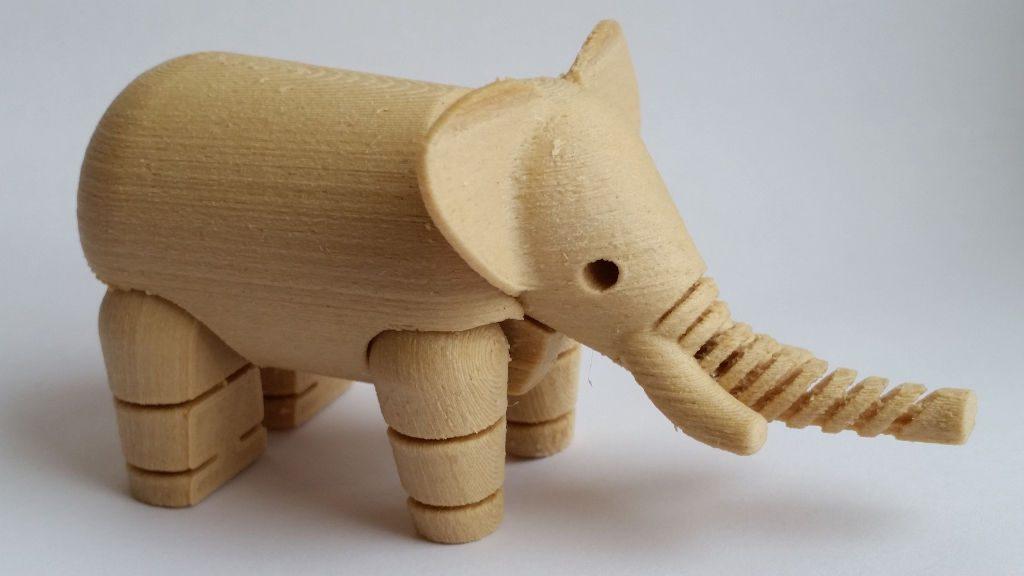
(Image: 3DWithUs)
– Tips. In order to print effectively with wood filament, and specifically to avoid excessive stringing and nozzle blocking, please read our review, which includes numerous print examples.
Metal Filament
General settings and recommendations:
Nozzle: 190-230°C; Bed: 0-60°C
Nozzle size: 0.4mm and larger
Difficulty: medium (risks: nozzle clogging)
Metal filament consists of 60-90% polymers and 10-40% of metal powder. On the image below, a metal part was 3D printed in a brass metal filament and sanded. There are also bronze and iron filaments available that rust if kept outdoors. Metal filament is heavier than usual and prints have a rough metal-like surface. Prints have to be sanded to achieve a shiny look.
Metal Filament
Amazon
(affiliate link)
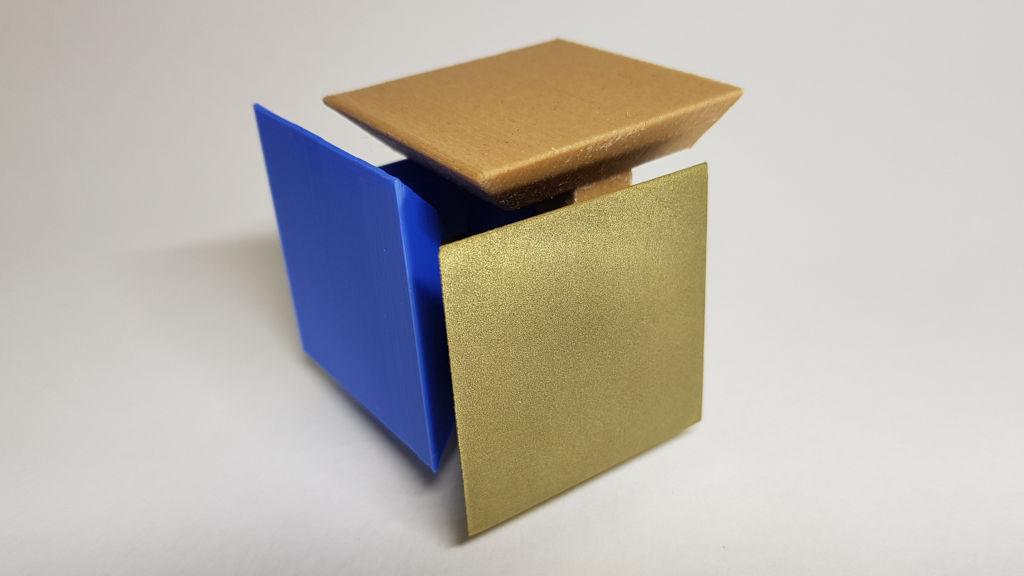
(Image: 3DWithUs)
Glow in the Dark
General settings and recommendations (if PLA):
Nozzle: 190-220°C; Bed: 0-50°C
Nozzle size: 0.4mm and larger
Difficulty: medium (risk: nozzle clogging)
Composite glow in the dark filament contains 20-30% glow powder. UV light charges the filament. Good for festive seasons like, Halloween for example. Filament loses its glow power if exposed to UV light for too long.
Glow in the Dark Filament
Amazon
(affiliate links)
AliExpress
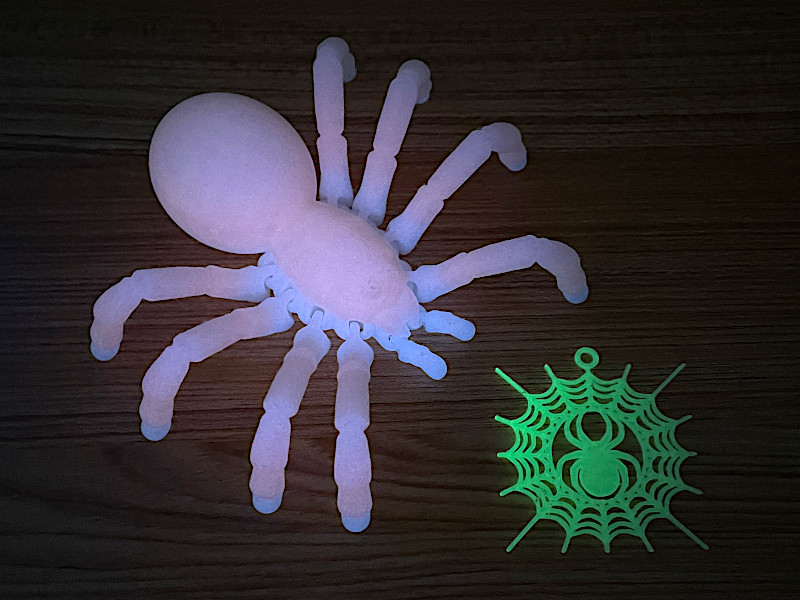
©3DWithUs – Print and Photo: Max Funkner
Articulated Tarantula by McGyBeer 3D printed in Rainbow Glow in The Dark PLA. You can see the transition from blue to red. UV Torch is ideal for charging the glow. One of the best filaments for Halloween 3D prints.
UV Torch
UV Flashlight 395-405 nm

Affiliate Links:
Amazon
One of the best products to charge such both Glow in the Darg and UV Color Change filaments is UV Torch. The filament gets charged in a matter of seconds.
UV Color Changing
General settings and recommendations (if PLA):
Nozzle: 190-230°C; Bed: 26-60°C
Nozzle size: 0.4mm and larger
Difficulty: easy
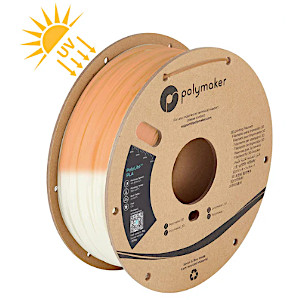
Affiliate Links:
Amazon
Offical Website
– Tips. The idea is similar to the glow in the dark, but it doesn’t glow in the dark. This particular shade-changing PLA changes color to Orange when under UV light or sunlight.
Rainbow Silk Filaments
General settings and recommendations (if PLA):
Nozzle: 200-230°C; Bed: 60-80°C
Nozzle size: 0.4mm
Difficulty: easy
Read More: Rainbow Filament Review – Silk PLA
If you’ve ever wanted to print a model with multiple colors on a single extruder 3D printer without changing materials mid-print, the Rainbow Silk PLA filament is definitely worth checking out.
Product Links:
Amazon
AliExpress
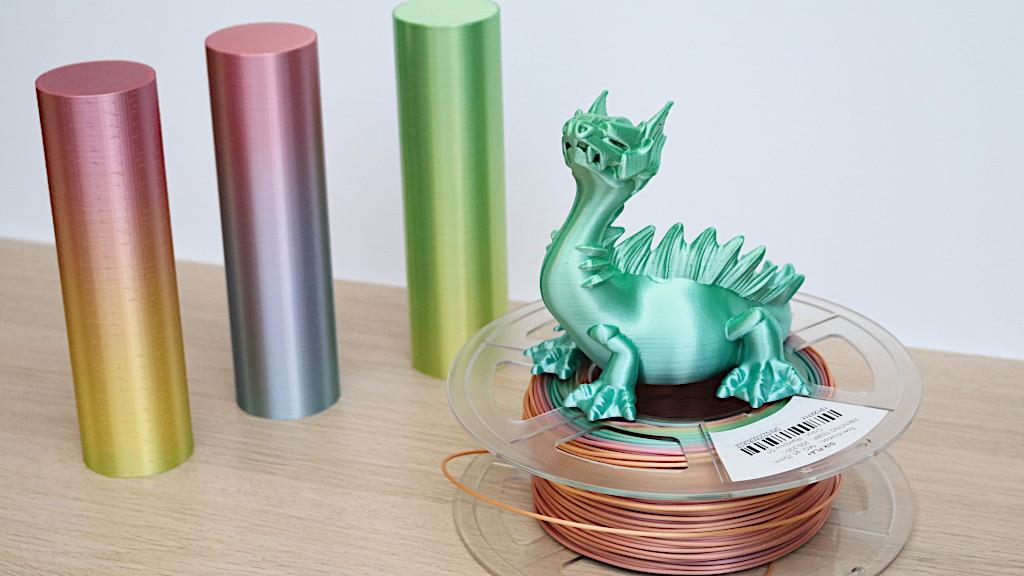
(Photo: Andrew Sink)
Rainbow Matte or Pastel Filaments
General settings and recommendations (if PLA):
Nozzle: 200-230°C; Bed: 60-80°C
Nozzle size: 0.4mm
Difficulty: easy (no risks, but needs some tunning for optimal transition)
Product Links:
Amazon

3D Model by KOZA Design on Cults
©3DWithUs – Print and Photo: Richard Hirst
– Tips. In order to print well using such filaments, it is important to sense when and where the transition will occur and what colour shade is preferable at the base and at the top of the print. Models in most cases will be slightly larger than usual to feature the transitions in the desired manner. Sometimes, unspooling the filament until the preferred shade is reached is a good strategy. This may also generate a small bit of filament sample for other single-colour projects.
Thermochromic – Color Changing with Temperature
General settings and recommendations (if PLA):
Nozzle: 210-215°C; Bed: 0-60°C
Nozzle size: 0.4mm
Difficulty: easy
Read More: Thermochromic Filament Review
Another interesting desktop 3D printer material to try is the color-changing filament. Such thermochromic material changes its color depending on the temperature. Let’s test how the color-changing PLA works, and where it can be used.
Color-changing with Temperature Filament
Amazon
(affiliate links)
AliExpress

(Image: 3DWithUs)
Glitter & Marble
General settings and recommendations (if PLA):
Nozzle: 200-220°C; Bed: 80-100°C
Nozzle size: 0.4mm and larger
Difficulty: easy – medium (risks: nozzle clogging)
Filaments with added shiny particles are often labeled as Glitter filament. The known brands such as Prusament (Gallaxy) and Fillamentum (Vertigo) have wide ranges of such high-quality materials. The particles inside the filament often help to conceal the layers that result in impressive models which can be put on display or serve as a gift.

(Image: 3DWithUs)
Marble effect filaments also bear added particles. According to what we tried ourselves and the general feedback, it is trickier to print with Marble filament and there is a risk of nozzle clogging. Marble effect PLA can come handy for printing out particular items like sculptures or vases.
Marble Filament
Amazon
(affiliate links)
AliExpress
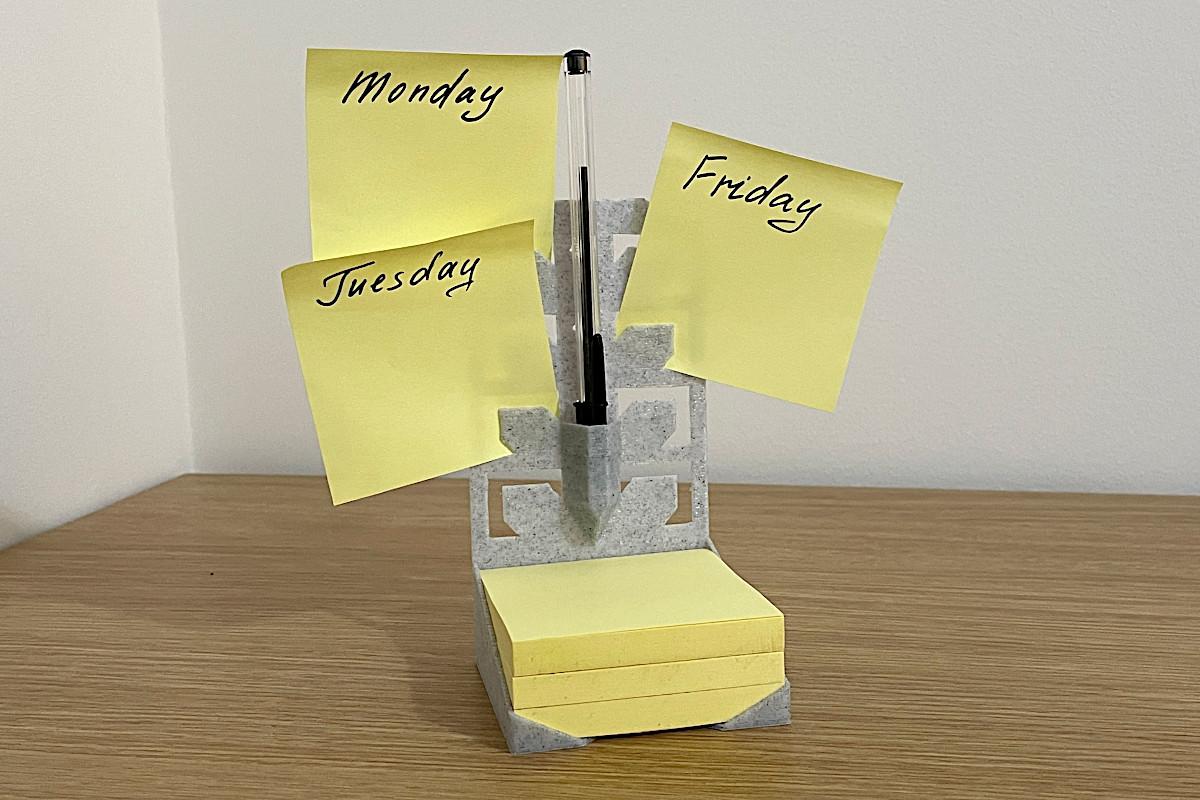
(Image: 3DWithUs)
Dual and Tri-Color PLA – Silk and Matte
General settings and recommendations (if PLA):
Nozzle: 205-215°C; Bed: 50-65°C
Nozzle size: 0.4mm and larger
Difficulty: easy (no risks, but needs some tuning for optimal transition)
Product Links:
Amazon
AliExpress

Easter Bunny and Dog the Gardener Models by 3DWithUs on Printables
©3DWithUs – Photo: Max Funkner
– Tips. When printing with dual and tri-color filament, it’s beneficial to print a test object to determine the color placement on the bed for targeted color sides on your print, although the alignment may shift as the filament unwinds. For better aesthetics on flat surfaces, consider using concentric infill over rectilinear to prevent color striping around features. Be mindful of slicer settings, as they can inadvertently alter color patterns, especially in prints with changing directions like a bowl; employing vase mode can mitigate this but is limited in its application. Smaller up to 100mm height objects tend to keep the color patterns better.
PLA-CF – Carbon Fiber PLA Filament
General settings and recommendations (if PLA):
Nozzle: 190-220°C; Bed: 50-65°C
Nozzle size: 0.4mm and larger
Difficulty: medium (risks: nozzle clogging)
Product Links:
Amazon
AliExpress
Polymaker PLA-CF, featured below, can be purchased via Amazon and
Official Website
Carbon fiber PLA, or PLA-CF, is a composite material that combines PLA (polylactic acid) with carbon fiber strands, offering enhanced strength, stiffness, and dimensional stability compared to standard PLA. This innovative filament provides improved structural integrity and reduced weight, making it ideal for applications requiring higher rigidity and durability while maintaining the ease of printing associated with PLA.
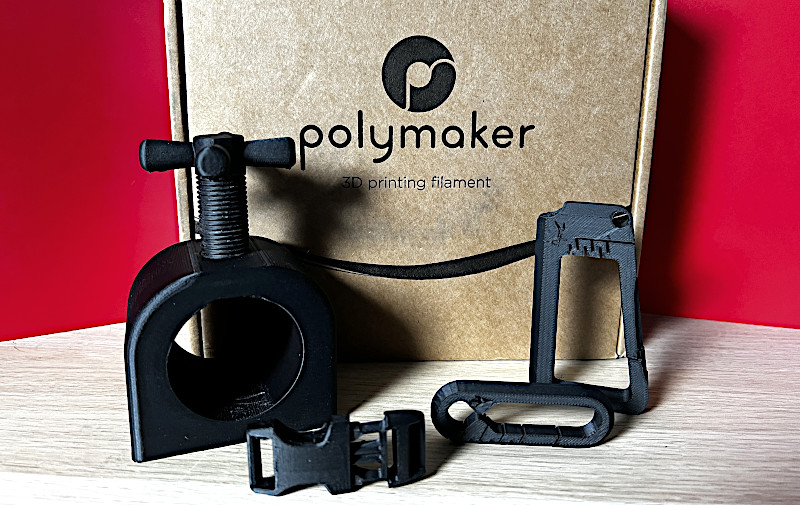
3D Models by Bruno_p and by Teriomeek on Cults
©3DWithUs – Print and Photo: Richard Hirst
PET
General settings and recommendations:
Nozzle: 240-270°C; Bed: 80-100°C
Nozzle size: 0.4mm and larger
Difficulty: medium (risks: excessive stringing)
Read more: PET Filament Review
Another 3D printing material, which we have tested for the use in the home or office environment, is PET (Polyethylene Terephthalate). PET filament is food safe and waterproof therefore it is especially good for making vases, bottles, boxes, all sorts of containers …
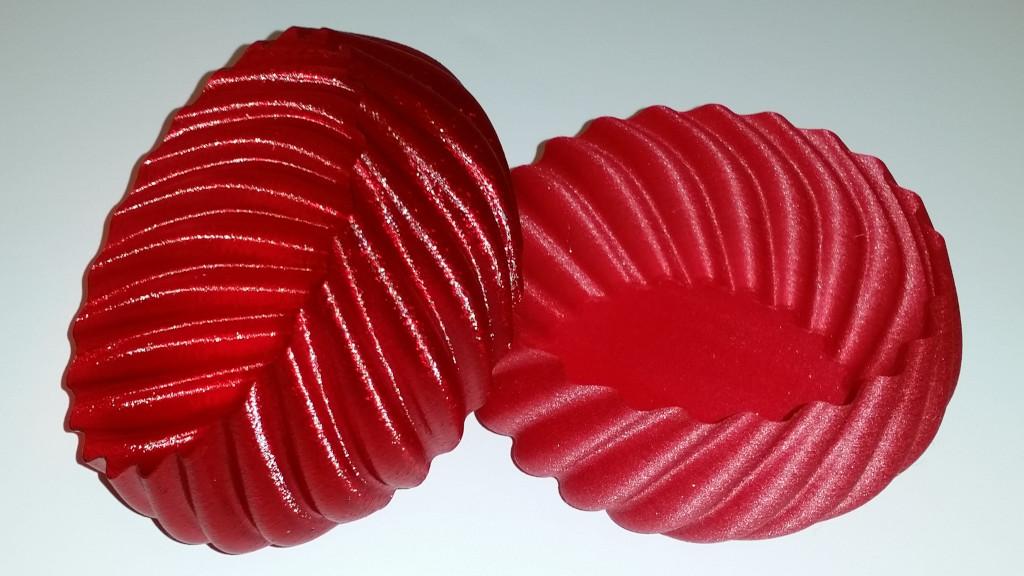
(Image: 3DWithUs)
PETG
General settings and recommendations:
Nozzle: 230-250°C; Bed: 80-90°C
Nozzle size: 0.4mm and bigger
Difficulty: medium (risks: excessive stringing)
Read more: Filament Review – Is PETG Waterproof?
PETG filament is a 3D printing material for desktop 3D printers that has been quickly gaining popularity. PETG is a polyethylene terephthalate (PET) that is glycol-modified. Before writing this review, we thought about adding the images of makes in PETG to the previous PET filament review that we published earlier. However, after trying to print in it, we realized that it was a different material that required different printing settings, and therefore it deserved a proper review and its separate photo gallery. It is known to be waterproof, but do the models come out really waterproof when printed with desktop 3D printers? Let’s check where PETG filament is used together with its Pros and Cons …
PETG Filament
Amazon
(affiliate links)
AliExpress
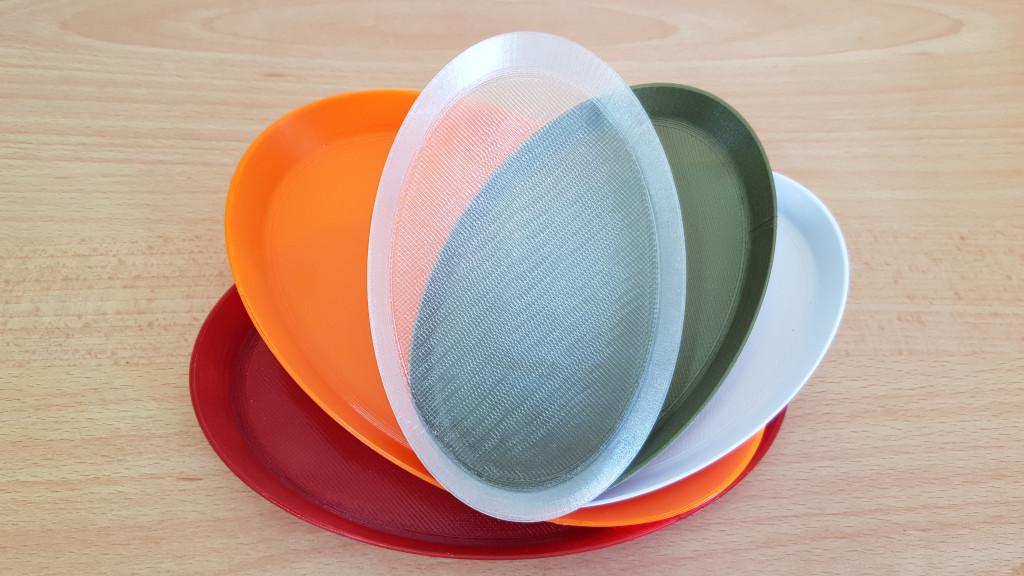
(Image: 3DWithUs)
Flexible Filament – TPU, TPE
General settings and recommendations:
Nozzle: 220-240°C; Bed: 0-60°C
Nozzle size: 0.4mm and larger
Difficulty: medium (risks: oozing, bed adhesion)
Read more: Flexible Filament Review – TPU, TPE
Flexible filaments, including TPU and TPE, are not as frequently used in 3D printing as PLA or PETG. The reason may be that 3D printing using such materials requires certain skills together with the good knowledge and feel of your machine. Also, slicer settings, like in Cura or Simplify3D, have to be adjusted individually. Not all objects can be printed in flexible material. For example, designs with joint parts, that work well in PLA or ABS, may require modification to suit flexible filament. This post is updated frequently with brief reviews, pros and cons, and ideas for 3D printing.
Flexible Filament
Amazon
(affiliate links)
AliExpress
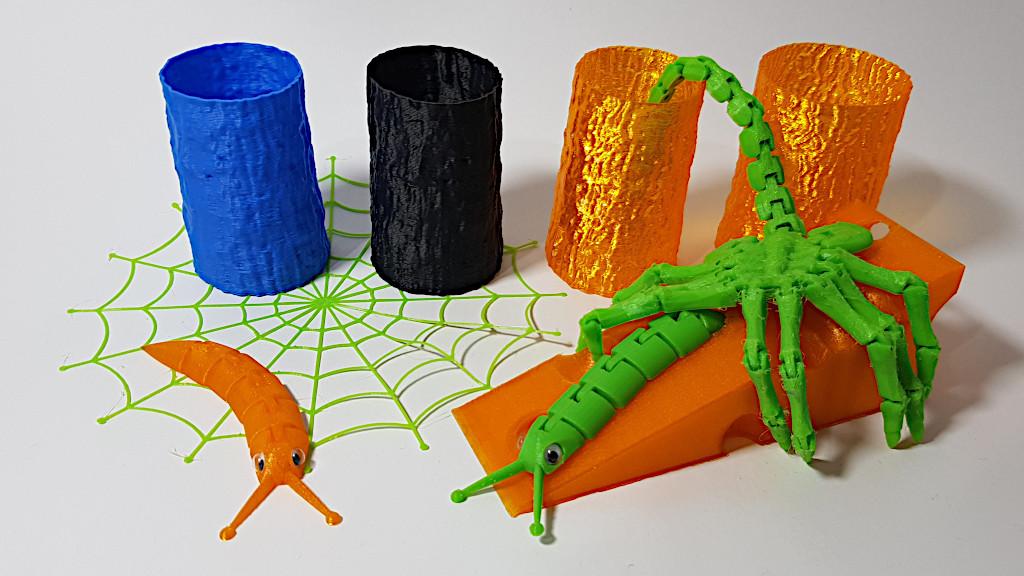
(Image: 3DWithUs)
ABS
General settings and recommendations:
Nozzle: 220-240°C; Bed: 80-100°C
Nozzle size: 0.4mm and larger
Difficulty: medium (risks: warping, bed adhesion, smell)
Read more: ABS Filament & Acetone Smoothing Review
When we started our adventure in 3D printing, ABS filament (Acrylonitrile Butadiene Styrene) was one of the most popular 3D printing materials. Later it lost its leading position to PLA and PETG. Some of ABS properties, though, may keep this filament in the top 5 for a while, despite of a few disadvantages when using it for 3D printing at home.
ABS Filament
Amazon
(affiliate links)
AliExpress

(Image: 3DWithUs)
Filament Innovations
Some filament manufacturers are confident enough to bring novel materials and solutions to the market adding diversity to 3D printing.
– Antibacterial PLA. Smart Materials company MatX is introducing an innovative anti-microbial filament with unique properties. Let’s have a quick look at AMBX PLA, learn about the company, and see what other products and innovations they are working on.
– NoneOilen. Recent notable material was created by Fillamentum. 100% biodegradable, reusable without losing properties, and food-safe NoneOilen won a 3DPI award for Fillamentum.
– Eco-friendly Spool Options. Despite many attempts to reuse leftover spools, a lot of them still end up in the landfill. Even recycling such spools is not ecological enough. Some 3D printing material manufacturers are taking more action and driving the implementation of new green industry standards.
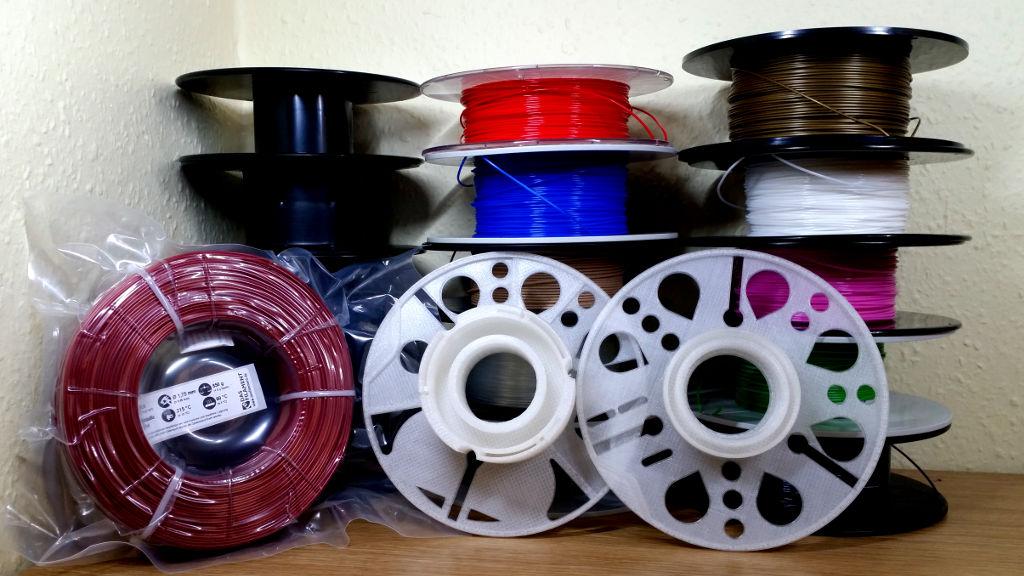
(Image: 3DWithUs)
– Refills & MasterSpool. Richard Horne aka @RichRap3D who tirelessly promoted cardboard spools, in the end, published an ingenious reusable spool system. A so-called MasterSpool was designed to carry filament refills. DAS FILAMENT, the German filament manufacturer, quickly responded to the MasterSpool initiative and within days offered their customers to buy refill only.
Conclusion
Here we briefly mentioned some of the most popular filaments for FDM 3D printing. As filament manufacturers work hard to produce something new and interesting, we, as consumers, enjoy the abundance of variety. The more confident we grow with 3D printing, the higher the anticipation to try even experimental materials.
Read more: Filament and 3D Printer Test
There are many 3D printing test files to choose from on file repositories. The reason to use a proper test file is because it contains all hard-to-print bits. After printing such object it becomes clear what settings you need to complete tricky and detailed projects. Also, these files are designed in a way that you don’t use a lot of filament and printing time.




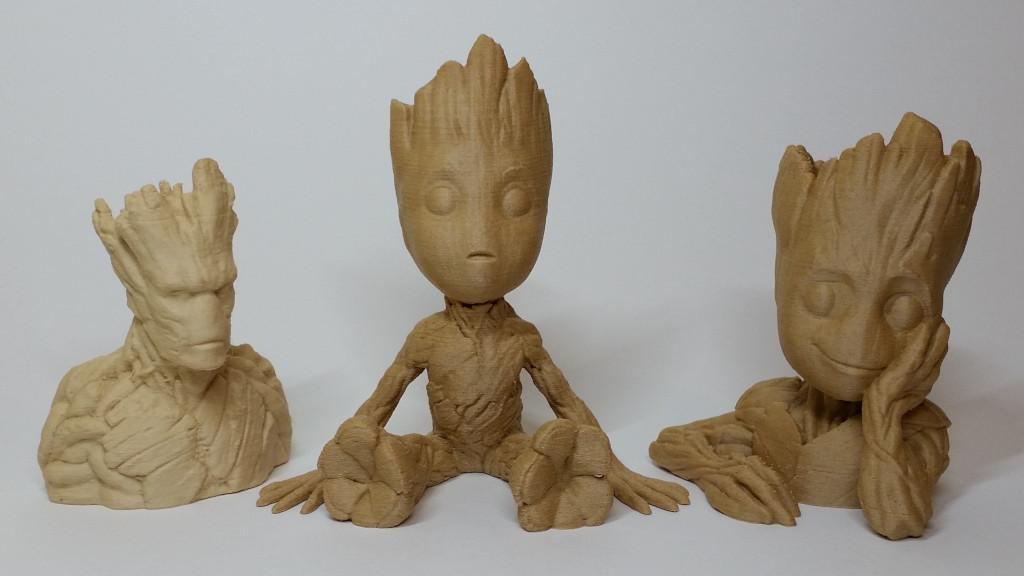
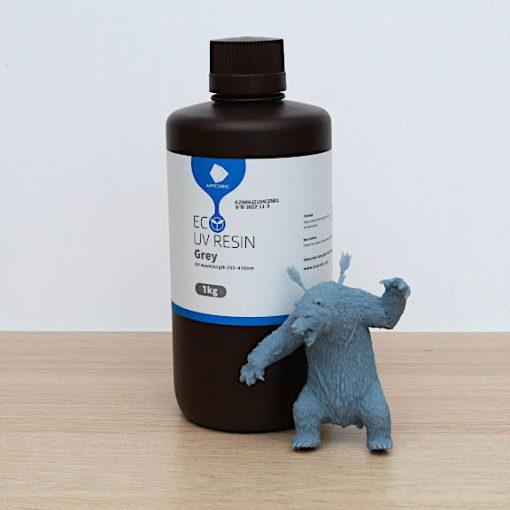
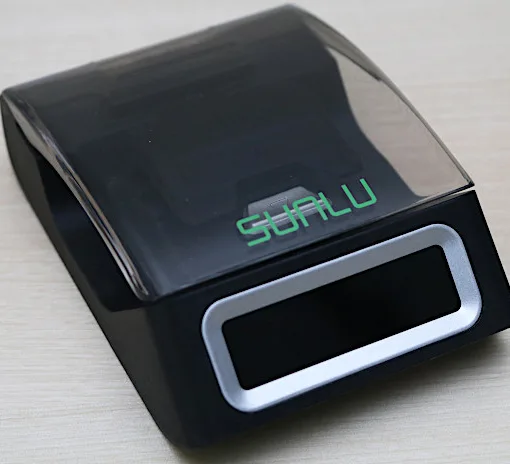
eSun also offers Re-filament, Rolls of 1kg of filament without a spool. In pla+ and in PETG.